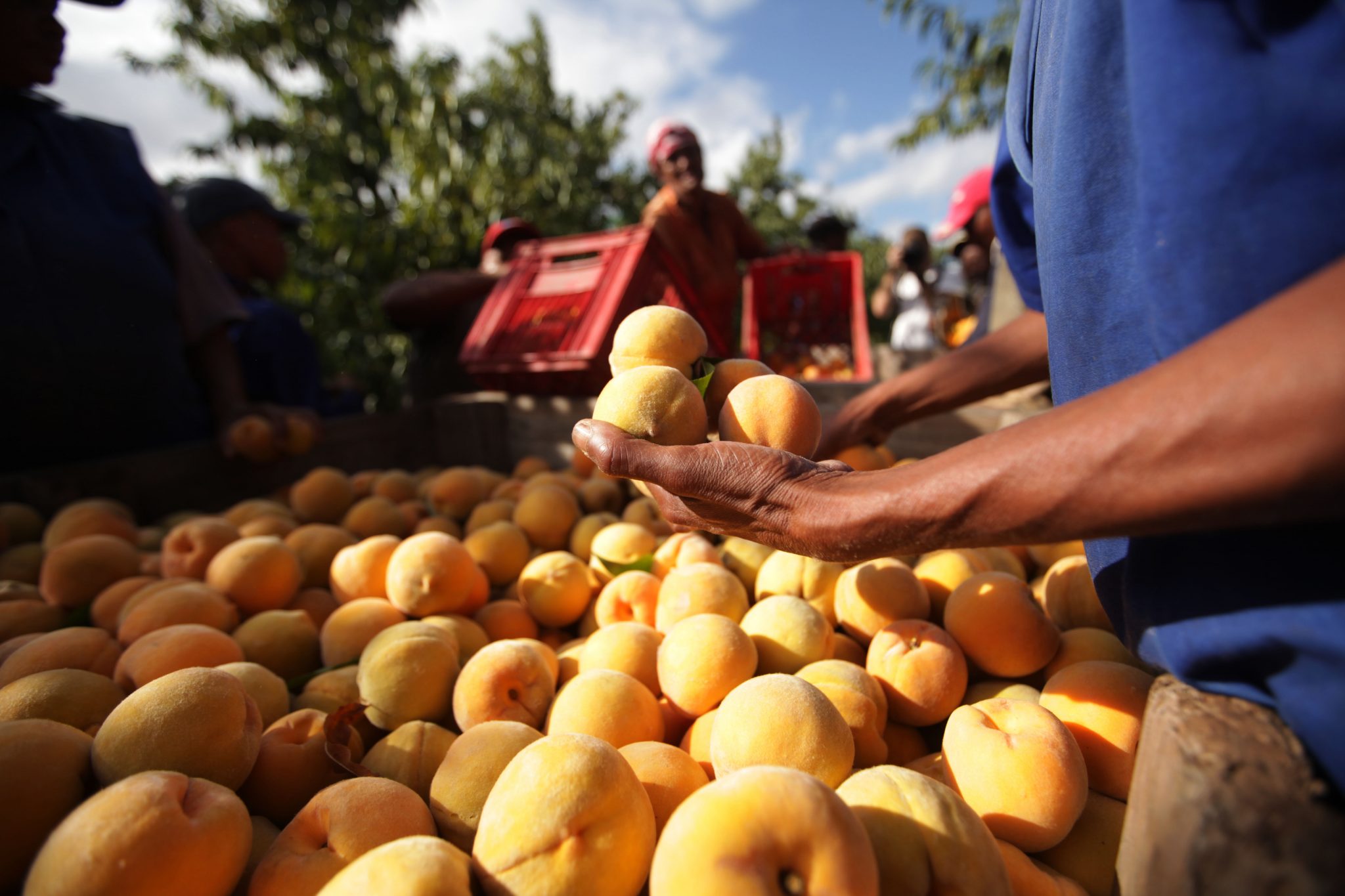- Rick Zapata/Alabama Extension News

No evidence indicates that livestock, crops, or products handled by workers involved in production agriculture are sources of COVID-19 infection. However, close contact with coworkers may contribute to spreading the virus.
The Centers for Disease Control and Prevention (CDC) and the US Department of Labor have provided guidance and recommendations for agriculture owners and operators. Agriculture employers can adapt these same guidelines and recommendations to protect workers at their work sites or in specific work operations.
Distinctive factors that affect farmworkers’ risk for COVID-19 in production agriculture workplaces include the following:
- Distance between workers. Farmworkers often have close contact with one another both in fields and indoors. Workers may also be in close contact at other times, such as when clocking in or out, during breaks, when sharing transportation or in shared housing.
- Duration of contact. Farmworkers often have prolonged close contact with coworkers on the work site, during transportation, and in some housing. Continued contact with potentially infectious people increases the risk of COVID-19 transmission.
- Type of contact. Farmworkers may be exposed to COVID-19 through respiratory droplets in the air, such as when workers who have the virus cough, sneeze, or talk. Exposure could also occur when workers have contact with contaminated surfaces or objects, such as tools, equipment, tractors, workstations, toilet facilities, or break room tables, and then touch their mouth, nose, or possibly their eyes. Touching your eyes is not considered to be the main way the virus spreads, but more continues to be learned about how this virus spreads.
Other factors that may increase risk among some workers include the following:
- Sharing transportation such as ride-share vans or shuttle vehicles, carpools, and public transportation.
- Living in employer-furnished housing and sharing living quarters, cooking and eating areas, bathrooms, and laundry facilities with fellow workers.
- Living in crowded and multigenerational housing.
- Contact within households and families and with fellow workers in community settings in areas with ongoing community transmissions.
- Mobility of the workforce, including migrant workers, who, in moving from farm to farm, can potentially spread the virus among communities.
- Poor access to clean water for hygiene purposes throughout the day.
Farm owners and operators can prevent and slow the spread of COVID-19. Owners and operators should develop a COVID-19 assessment and control plan to protect themselves and farmworkers, in accordance with the CDC Interim Business Guidance for Businesses and Employees. The CDC also provides guidance on how to develop a plan, screen and monitor workers, manage sick workers, and address the return to work of an infected worker.









